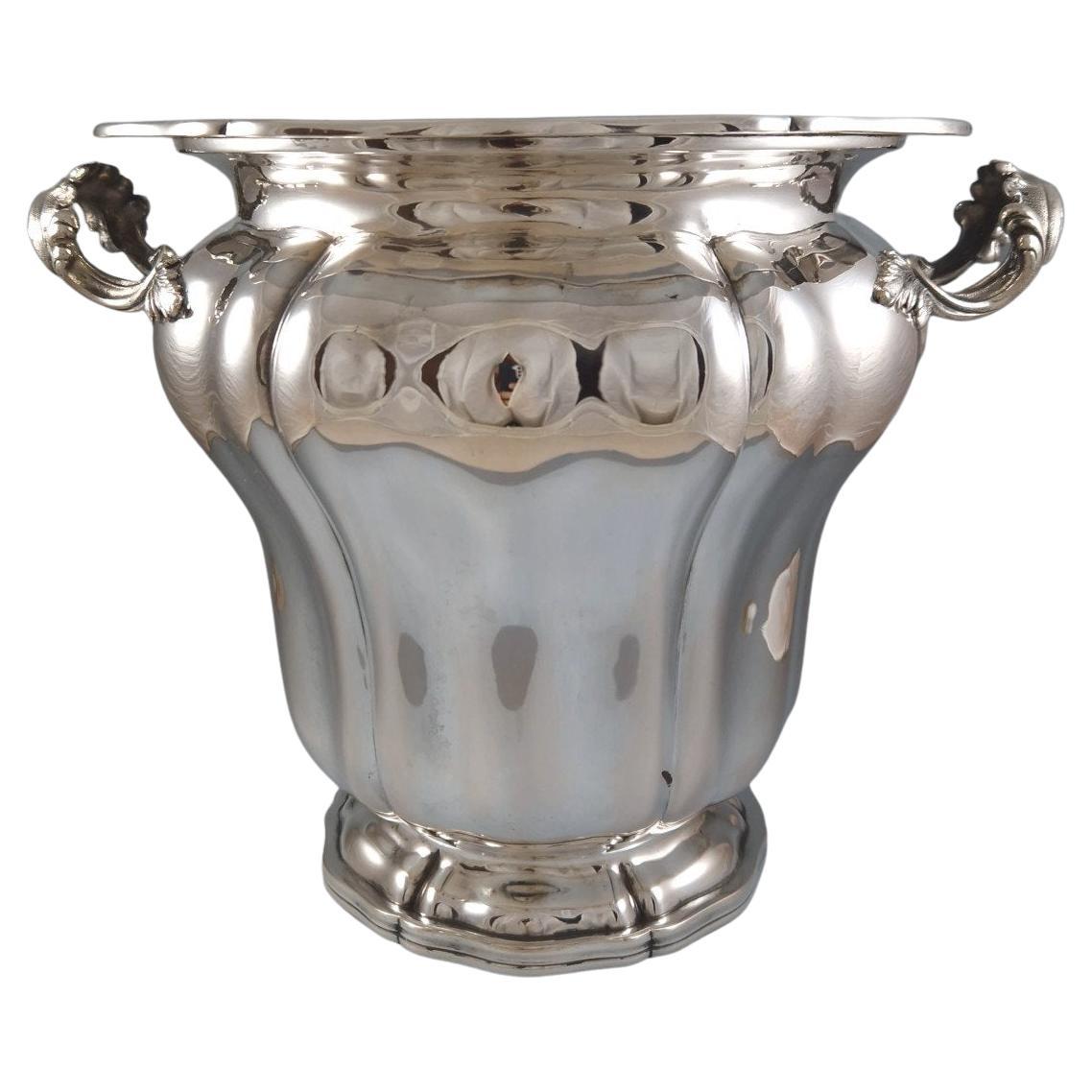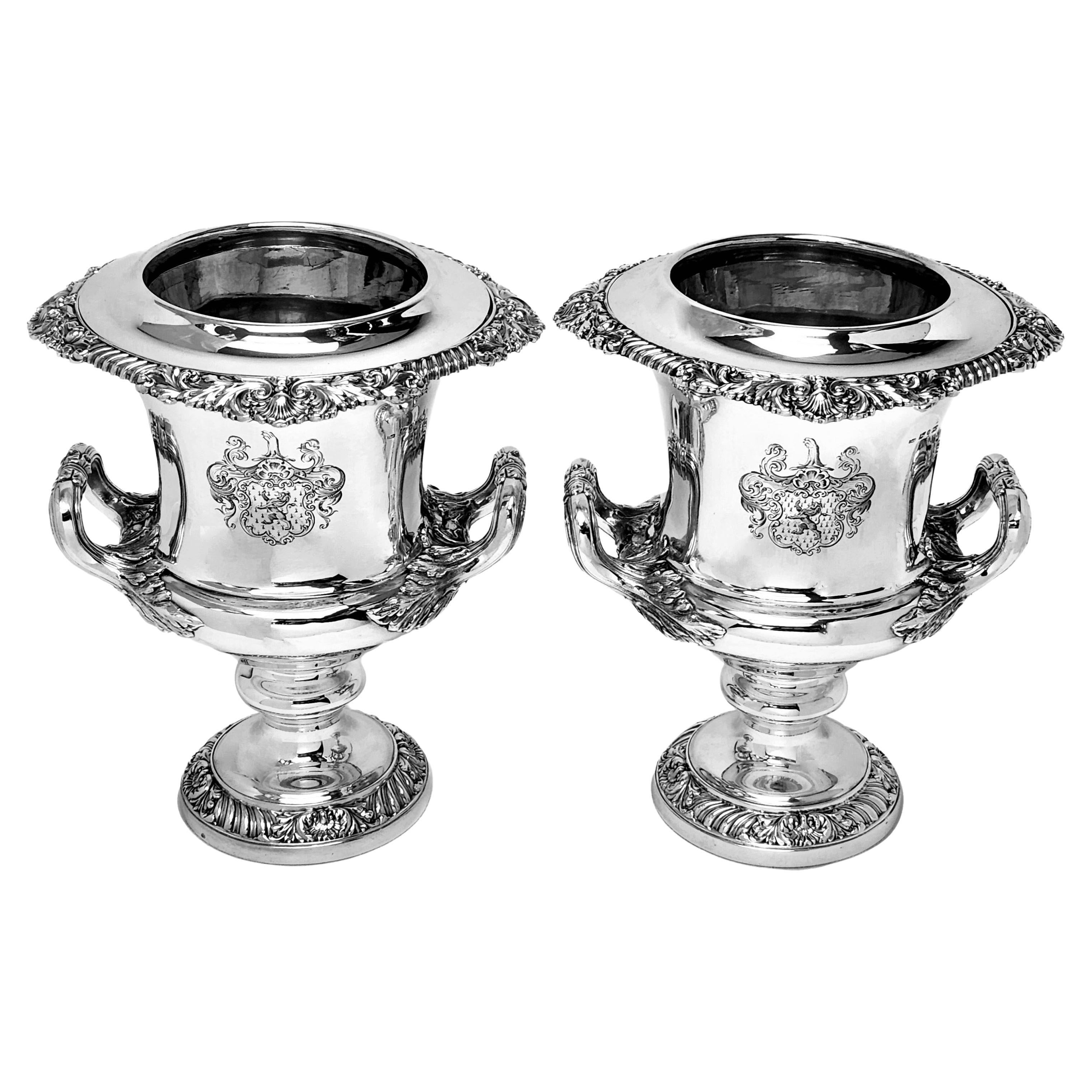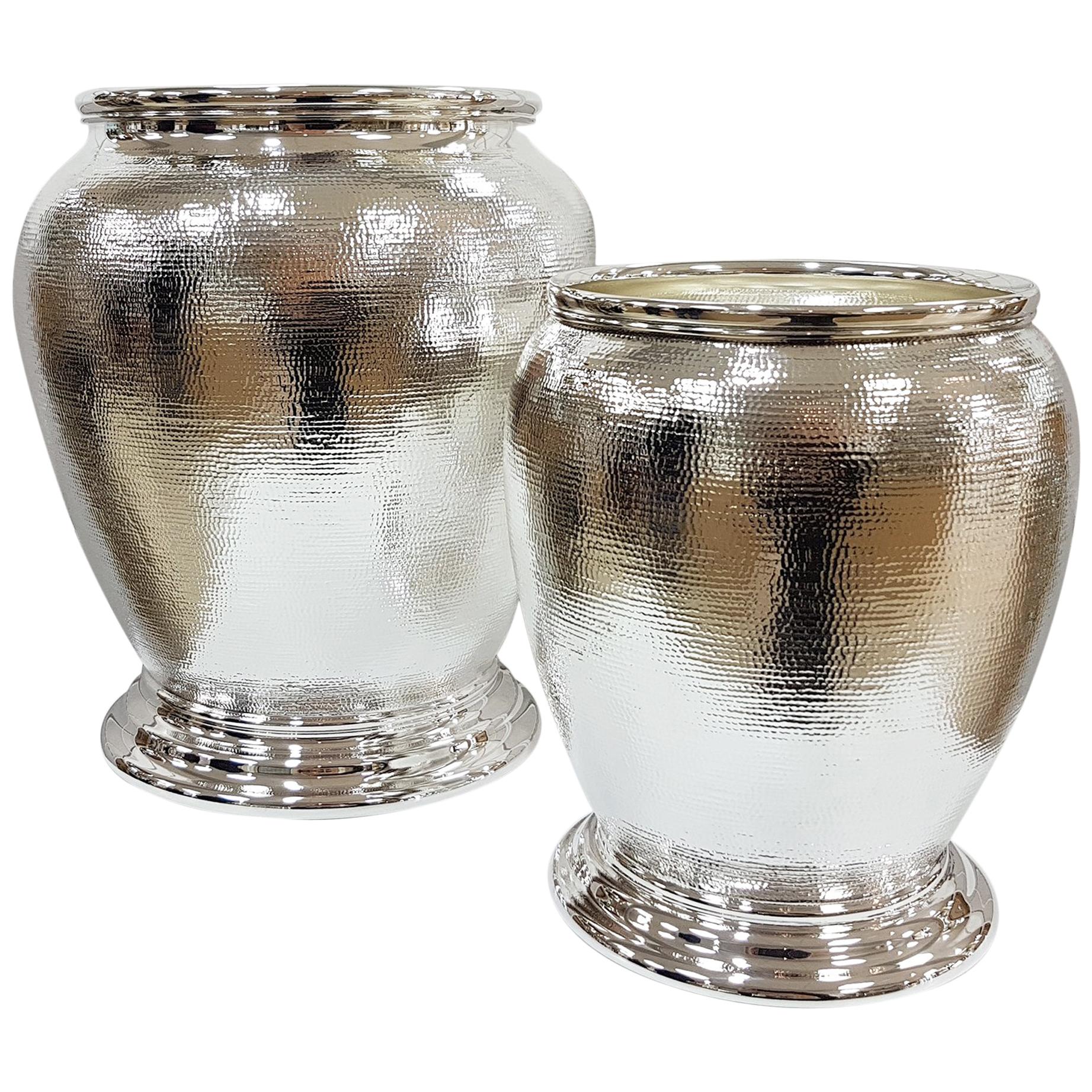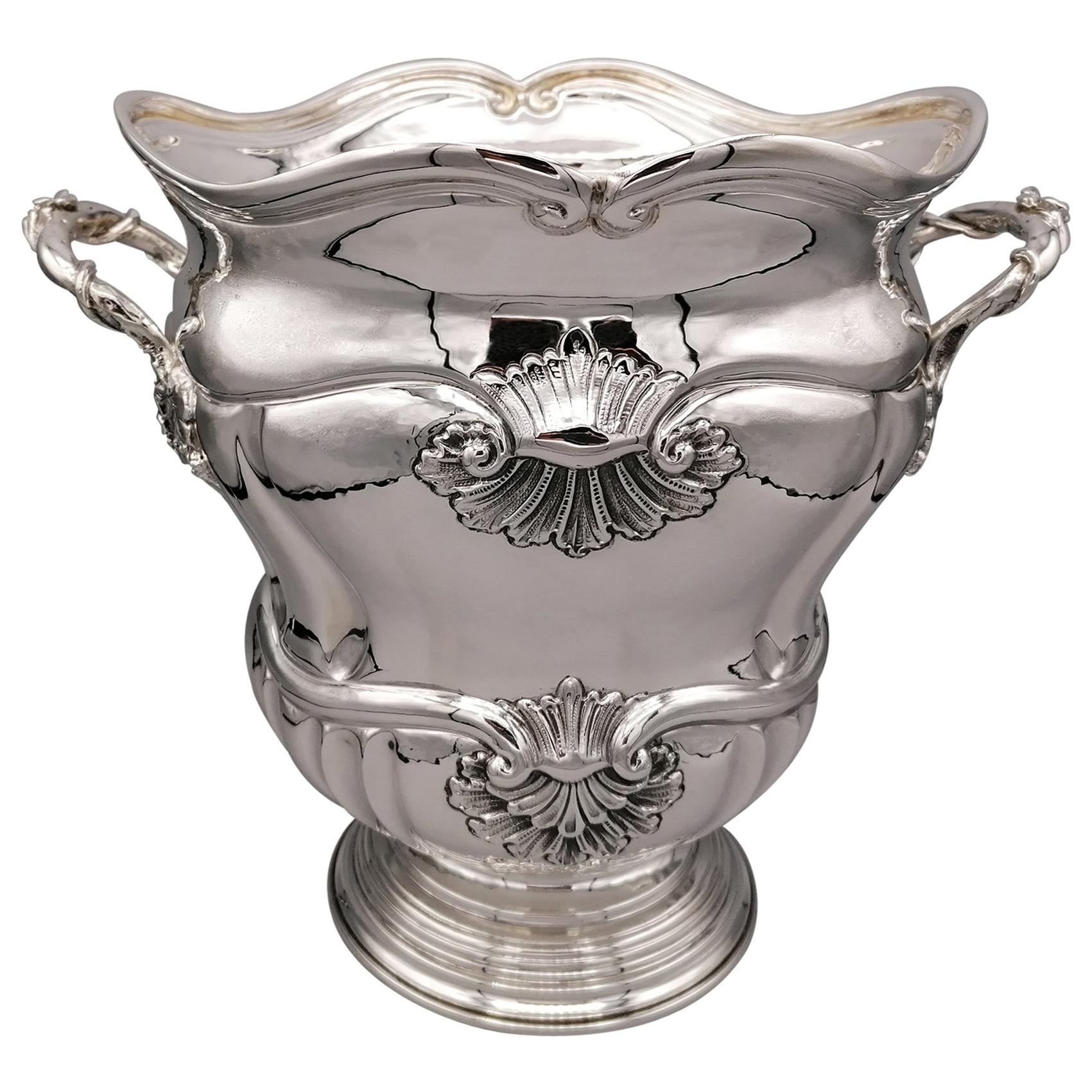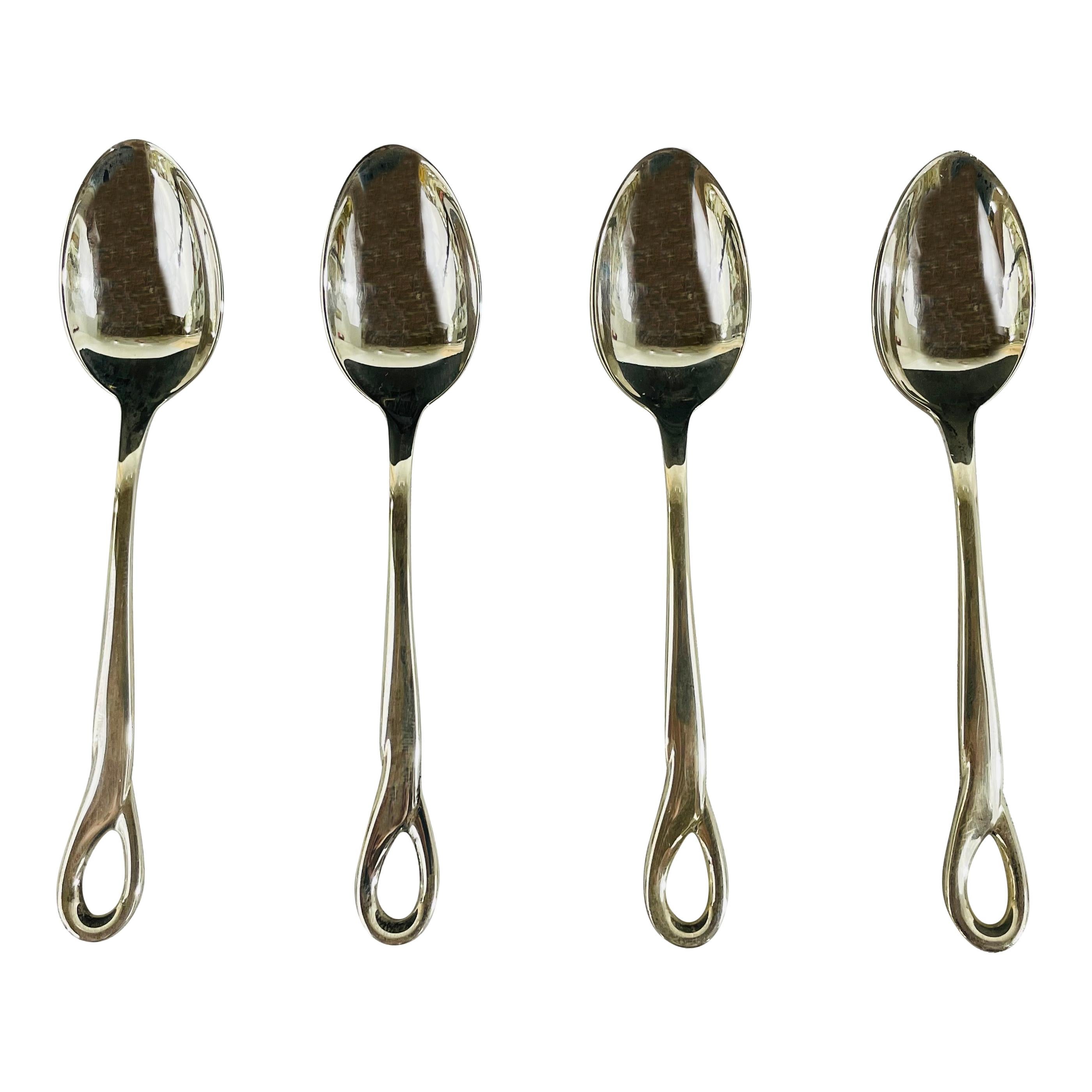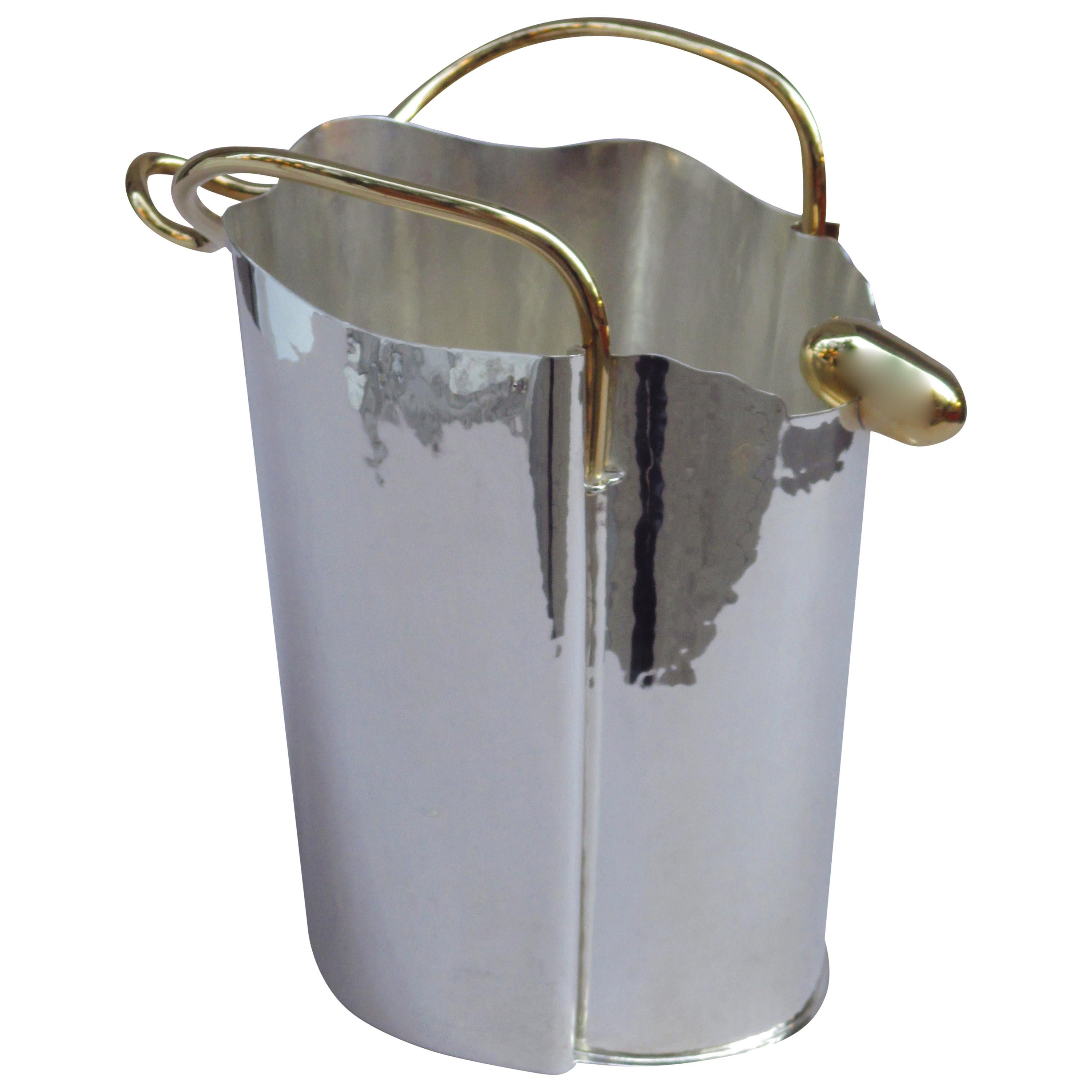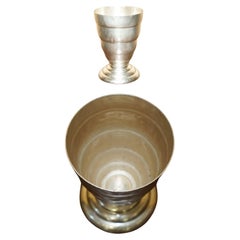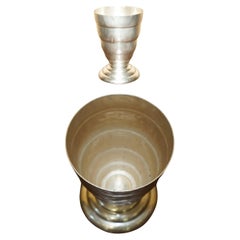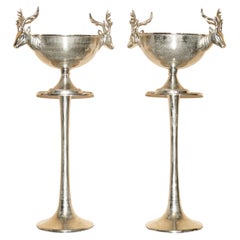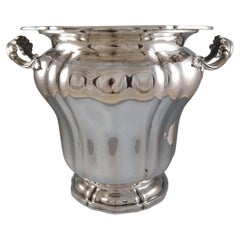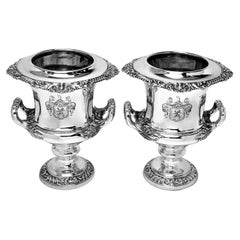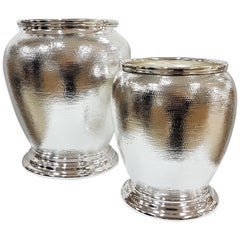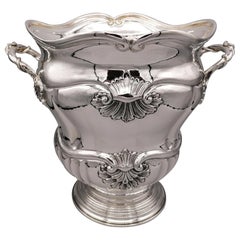STERLING SILVER TIFFANY & CO ELSA PERETTI STERLING SiLVER CHAMPAGNE BUCKET
About the Item
- Creator:Elsa Peretti for Tiffany & Co. (Designer),Tiffany & Co. (Retailer)
- Dimensions:Height: 7.88 in (20 cm)Width: 9.85 in (25 cm)Depth: 9.65 in (24.5 cm)
- Style:Art Deco (In the Style Of)
- Materials and Techniques:
- Place of Origin:
- Period:
- Date of Manufacture:20th century
- Condition:Wear consistent with age and use. Minor fading.
- Seller Location:GB
- Reference Number:1stDibs: LU2823331136032
Elsa Peretti for Tiffany & Co.
In an era of social upheaval, venerable Tiffany & Co. designer Elsa Peretti reimagined diamonds as jewelry that working women bought for themselves rather than receiving it from a suitor.
By the time the Italian-born Peretti (1940–2021) arrived in New York City, she’d already studied design in Rome, worked for a Milanese architect and taught Italian, French and skiing in Switzerland. She settled on interior design as her potential career path but then chose an altogether different route: modeling. Peretti modeled in Barcelona, Spain, and on the advice of Wilhelmina Cooper — a former model who’d by then founded Wilhelmina Modeling Agency — moved to Manhattan in 1968. When she relocated, Peretti was inspired to pick up jewelry design.
After modeling for designer Halston, the undisputed fashion king of Studio 54, Peretti became his close friend and collaborator, eventually creating jewelry and teardrop-shaped perfume bottles for him. By way of her association with Halston, Peretti took to the disco scene, flourishing in a social circle that included artist Andy Warhol and fashion designer Giorgio di Sant’Angelo.
It wasn’t long before models on di Sant’Angelo’s runway were donning two-inch sterling-silver vases, complete with a rose stem, suspended on leather thongs around their necks. The accessory was Peretti’s inaugural piece of jewelry — she designed it in 1969 after finding a flower vase at a flea market. It was hardly the only time that Peretti found motifs in nature and in organic forms. In the years that followed, her Bean pendant necklace, Starfish earrings and other sensuous accessories would draw on human emotion as well as the natural world around her. Each evocative and wholly versatile design is universally adored decades later, and each was made for a storied American jewelry house with which Peretti would be associated for nearly 50 years.
It was Halston who introduced Peretti to Tiffany & Co. She had her own boutique at Bloomingdale’s by 1972, and her partnership with the firm, which signed the venturesome and unorthodox designer to an exclusive contract in 1974, would cement her place in the lofty annals of jewelry legend. Peretti’s simple but sophisticated designs — the Teardrop collection, her minimalist Diamonds by the Yard necklace and Open Heart ring, to name a few — elevated sterling silver, previously considered unsuitable for fine jewelry, and created an enthusiastic young audience for Tiffany’s offerings. In 1977, Peretti’s designs earned the jewelry house more than $6 million. (In some years, her work has accounted for 10 percent of the company’s sales.)
In 2012, Peretti signed a 20-year, $47.3 million contract with Tiffany & Co., but she passed away in 2021, at age 80. Today, her designs are in the permanent collections of the Metropolitan Museum of Art in New York City and the British Museum.
Find an exquisite collection of Elsa Peretti jewelry today on 1stDibs.
Tiffany & Co.
Tiffany & Co. is one of the most prominent purveyors of luxury goods in the United States, and has long been an important arbiter of style in the design of diamond engagement rings. A young Franklin Delano Roosevelt proposed to his future wife, Eleanor, with a Tiffany ring in 1904. Vanderbilts, Whitneys, Astors and members of the Russian imperial family all wore Tiffany & Co. jewels. And Jacqueline Kennedy Onassis preferred Tiffany china for state dinners at the White House.
Although synonymous with luxury today, the firm started out rather modestly. Charles Lewis Tiffany and John B. Young founded it in Connecticut as a “stationery and fancy goods emporium” in 1837, at a time when European imports still dominated the nascent American luxury market. In 1853, Charles Tiffany — who in 1845 had launched the company’s famed catalog, the Blue Book, and with it, the firm’s signature robin’s-egg blue, which he chose for the cover — shifted the focus to fine jewelry. In 1868, Tiffany & Co. gained international recognition when it became the first U.S. firm to win an award for excellence in silverware at the Exposition Universelle in Paris. From then on, it belonged to the pantheon of American luxury brands.
At the start of the Gilded Age, in 1870, Tiffany & Co. opened its flagship store, described as a "palace of jewels" by the New York Times, at 15 Union Square West in Manhattan. Throughout this period, its designs for silver tableware, ceremonial silver, flatware and jewelry were highly sought-after indicators of status and taste. They also won the firm numerous accolades, including the grand prize for silverware at the Paris Exposition of 1878. Among the firm’s glittering creations from this time are masterworks of Art Nouveau jewelry, such as this delicate aquamarine necklace and this lavish plique-à-jour peridot and gold necklace, both circa 1900.
When Charles Lewis Tiffany died, in 1902, his son Louis Comfort Tiffany became the firm’s design director. Under his leadership, the Tiffany silver studio was a de facto design school for apprentice silversmiths, who worked alongside head artisan Edward C. Moore. The firm produced distinctive objects inspired by Japanese art and design, North American plants and flowers, and Native American patterns and crafts, adding aesthetic diversity to Tiffany & Co.’s distinguished repertoire.
Tiffany is also closely associated with diamonds, even lending its name to one particularly rare and exceptional yellow stone. The firm bought the Tiffany diamond in its raw state from the Kimberley mines of South Africa in 1878. Cut to create a 128.54-carat gem with an unprecedented 82 facets, it is one of the most spectacular examples of a yellow diamond in the world. In a broader sense, Tiffany & Co. helped put diamonds on the map in 1886 by introducing the American marketplace to the solitaire diamond design, which is still among the most popular engagement-ring styles. The trademark Tiffany® Setting raises the stone above the band on six prongs, allowing its facets to catch the light. A lovely recent example is this circa-2000 platinum engagement ring. Displaying a different design and aesthetic (but equally chic) is this exquisite diamond and ruby ring from the 1930s.
- ShippingRetrieving quote...Ships From: United Kingdom
- Return PolicyA return for this item may be initiated within 14 days of delivery.
More From This Seller
View AllVintage 1930s English Art Deco Wine Coolers
Silver Plate
Vintage 1920s British Art Deco Wine Coolers
Silver Plate
20th Century European Art Deco Wine Coolers
Metal
Antique 1890s American Sterling Silver
Sterling Silver
Vintage 1930s French Art Deco Barware
Silver Plate
Vintage 1910s French Art Deco Barware
Brass
You May Also Like
Vintage 1950s Wine Coolers
Sterling Silver
Antique 19th Century English Early Victorian Wine Coolers
Sterling Silver
Early 2000s Italian Other Sterling Silver
Sterling Silver
Vintage 1980s Italian Baroque Sterling Silver
Sterling Silver
Vintage 1980s Italian Mid-Century Modern Sterling Silver
Sterling Silver
1990s Modern Wine Coolers
Sterling Silver
Recently Viewed
View AllRead More
The Sparkling Legacy of Tiffany & Co. Explained, One Jewel at a Time
A gorgeous new book celebrates — and memorializes — the iconic jeweler’s rich heritage.
15 Scintillating Jewelry Watches to Elevate Your Holiday Style
Watchmakers have tucked their movements into all manner of precious baubles, from lapel pins to cocktail rings. The result is dazzling, wearable art that will get you to the party on time.
